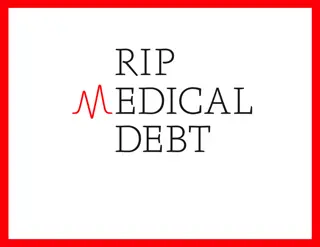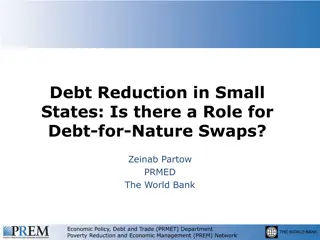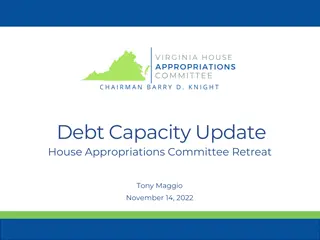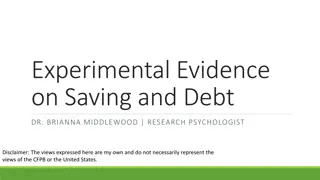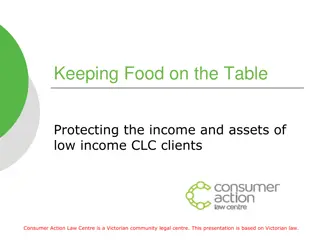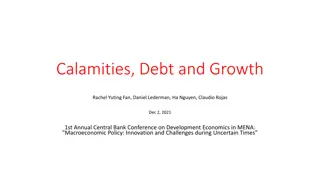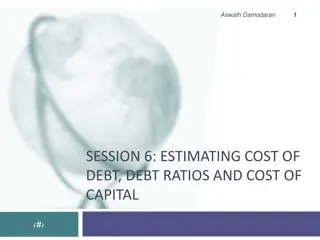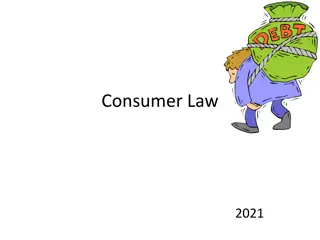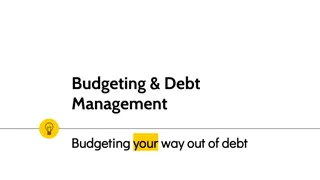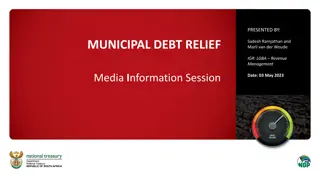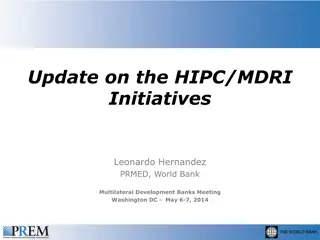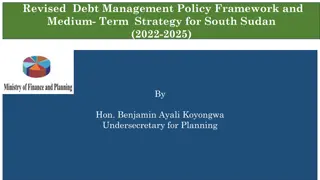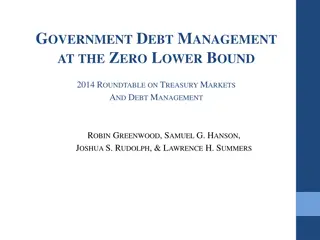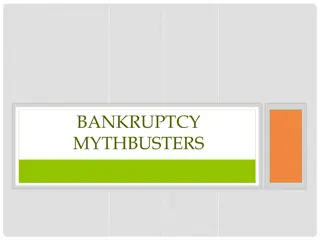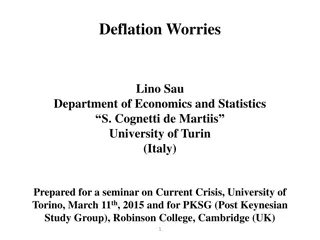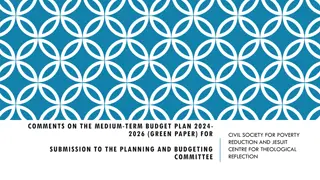Understanding the Impact of Debt on the U.S. Economy
Explore the insights shared by Dr. Merton Finkler regarding the implications of debt on the U.S. economy. Delve into topics such as fiscal space, debt expansion, historical context of federal government debt, burden assessments, and comparisons with other high-income countries. Gain valuable perspectives on managing public debt effectively for economic growth and stability.
Download Presentation

Please find below an Image/Link to download the presentation.
The content on the website is provided AS IS for your information and personal use only. It may not be sold, licensed, or shared on other websites without obtaining consent from the author. Download presentation by click this link. If you encounter any issues during the download, it is possible that the publisher has removed the file from their server.
E N D
Presentation Transcript
Will Debt Undue the U.S. Economy? By Merton Finkler, Ph.D. Professor Emeritus Lawrence University Talk to Oshkosh Rotary Club September 21, 2016
Overview Fiscal Space Debt Expansion Possibility History of U.S. Federal Government Debt When is Debt an Undue Burden? If So, to Whom? Private Debt can Become Public Debt How does the US Debt Compare to that of other High Income Countries? Conclusions
Fiscal Space Room to Expand Borrowing (IMF concept) Definition: the difference between governmental debt/GDP & the limit beyond which a country will default unless unprecedented fiscal contraction steps are taken. Countries with strong GDP growth and low interest payments tend to have fiscal space. A country s borrowing limit depends upon investor confidence, which is based on presumptions about going over a potential fiscal cliff.
Debt Policy Advice (IMF) Debt if existent public debt burdens the economy by requiring funds that would otherwise increase economic growth. Do not Debt if economy has ample fiscal space and funds can be devoted to economic growth (when distortive cost of Debt > benefits of crisis insurance) Debt should be used to smooth taxes when financing lumpy expenditures (such as investment in productive infrastructure.) According to the previous chart, the US has 165 percentage points of debt/GDP of fiscal space for expansion.
U.S. Federal Government Debt Total U.S. Debt at present - $19.5 Trillion (105% of GDP http://usdebtclock.org ) Debt held by the public or the Federal Reserve 76% of GDP All Sectors - $66.3 Trillion 358% of GDP During financial crises, private debt can become public debt GNMA, FNMA, AIG, banks
Who Bears the Burden of the Debt? View 1: Future generations Fiscal contraction required in the future View 2: Present generation Holders of debt devote funds to less productive places (crowding out of private investment) Current generation increases savings to help with prospective burden of next generation View 3: Export debt to foreign holders Little burden: Crowding in through increased aggregate demand which increases GDP Hidden burden: Printing money to payoff debt prospective inflation, value to debt holders, and imposes burden on those least able to cope with inflation.
Critical Determinants of the Burden of Debt Demographics: Can the work force support the dependent population? Entitlements: Will future commitments undermine potential economic growth? Reaction: Will foreign holders continue to hold $ denominated securities? How large a margin of safety is desired?
This Time is Different (NOT!) Carmen Reinhart and Kenneth Rogoff Excessive debt accumulation, whether it be by the government, banks, corporations, or consumers, often poses greater systemic risks than it seems during a boom. Such large-scale debt buildups pose risks because they make an economy vulnerable to crises of confidence, particularly when debt is short term and needs to be constantly refinanced. Highly leveraged economies can seem to be merrily rolling along for an extended period, when bang! - confidence collapses, lenders disappear, and a crisis hits. Eight centuries of experience suggests this time is not different. Once Government Debt/GDP > 90%, GDP growth drops by 1% Financial crisis generated recessions take longer to emerge from than non-financial crises.
Conclusions U.S. needs to bring entitlement growth in line with income growth which will require at least one of the following: Restricting benefits Expanding taxes Growing income Much more efficient use of medical care A much healthier population Debt should be used to pay for investments that generate a return sufficient to pay them off. In my view, current debt is not problematic, especially if used to make the labor force more productive. Prospective debt is problematic and should be addressed long before difficult choices must be made.
Thank You for Your Attention Questions?



